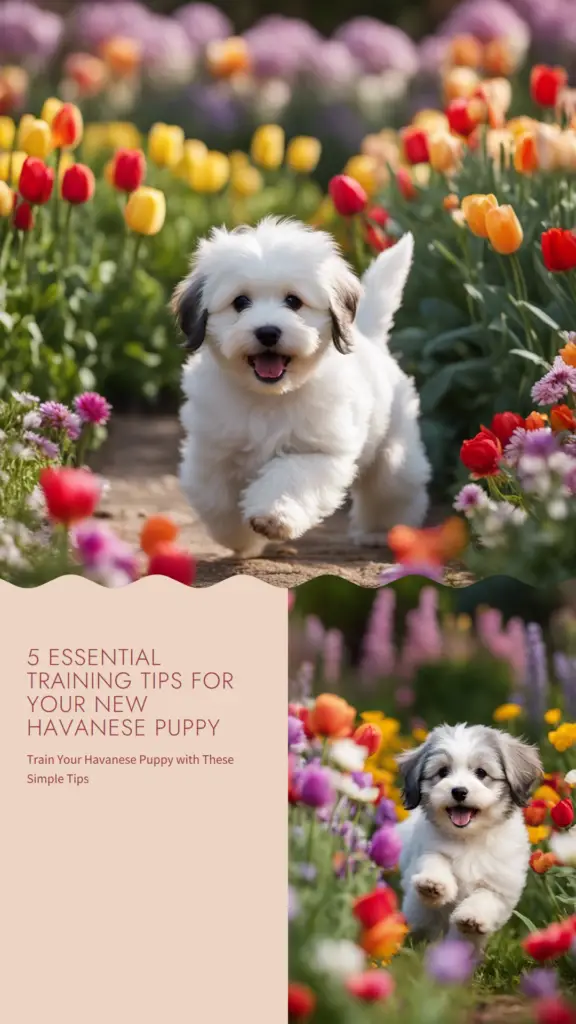As I gear up for each new hike into the wild woods near my home, I pack the essentials: compass, flashlight, extra layers…and, of course, a few tasty treats for my faithful four-legged companion. However, when I first brought home my Havanese puppy Rufus years ago, I quickly realized I was missing some other critical training tools to set us both up for success on our shared life journey.
Through trial and error on the winding trails of puppyhood, I uncovered the most valuable tips and gears to smooth the terrain. Whether potty training, teaching basic commands, curbing nuisance barking, or puppy separation anxiety, the right approach can make all the difference. In this article, I’ll share the top 5 puppy training tips I wish I had started with my Havanese pal to help you navigate the early days of bonding and learning with your fur baby. Let’s hit the Havanese training trail!
Table of Contents
- 1 1. Harness the Power of Positive Reinforcement
- 2 2. Get the Right Adventure Gear
- 3 3. Start Small on the Training Trail
- 4 4. Establish a Predictable Routine for Your Pup
- 5 5. Practice Patience on the Life Trail
- 5.1 What are the most effective positive reinforcement training methods?
- 5.2 What type of harness works best for training Havanese puppies?
- 5.3 Should I use treats continuously when training my Havanese puppy?
- 5.4 How can a routine help make Havanese puppy training more successful?
- 5.5 Why should I avoid punishments and stay patient with my Havanese puppy?
- 6 Related posts:
- 7 25 Happy Havanese Puppies
- 8 Unveiling the Havanese Temperament: Key Facts & Traits
- 9 Ultimate Guide to Havanese Colors
- 10 Do Havanese Dogs Shed?
1. Harness the Power of Positive Reinforcement
Clicker training was a total game-changer for teaching little Rufus basic obedience. The sharp noise is an instant cue that he performed the right action, while the following treat drives home the reward. This positive reinforcement approach taps into a pup’s innate food motivation to connect desired behaviors with a tasty payoff.
For example, when I say “Sit!” and Rufus obliges, click! Goes the clicker immediately before he receives a tiny nibble of puppy bacon. This consistency cements the behavior-treat link in his mind, making training more efficient. Within a week, Rufus would promptly park his fluffy behind-on command without the clicker once the concept clicked!

The key is to phase treats out gradually as behaviors become habitual, transitioning to primarily positive verbal reinforcement like “Good boy!” Eventually, your pup will loyally follow commands to please you. But starting that succulent steak strip facilitates the learning process tenfold. Trust me; I learned this lesson once I swapped Rufus’ kibble for real meat and watched his obedience skills skyrocket!
2. Get the Right Adventure Gear
Having the proper gear for training and puppy adventures eliminated tons of headaches with Rufus immediately. Like any good trail guide, make sure to pack:
A Comfortable Harness and Sturdy Leash: Starting leash training with a harness secured around Rufus’ torso eased the pressure on his delicate neck while giving me complete control.
I chose one with thick padding and breathable mesh since Havanese puppies have sensitive skin and joints. The adjustable straps ensured proper weight distribution and a customized snug fit as he grew. Plus, the bright colored strips kept trackable Rufus visible on the move.
Clip the harness to a five or 6-foot sturdy leash, and you’ll have full steering capability for a wandering pup without yanking or choking hazards of leash pressure on their collar during training.
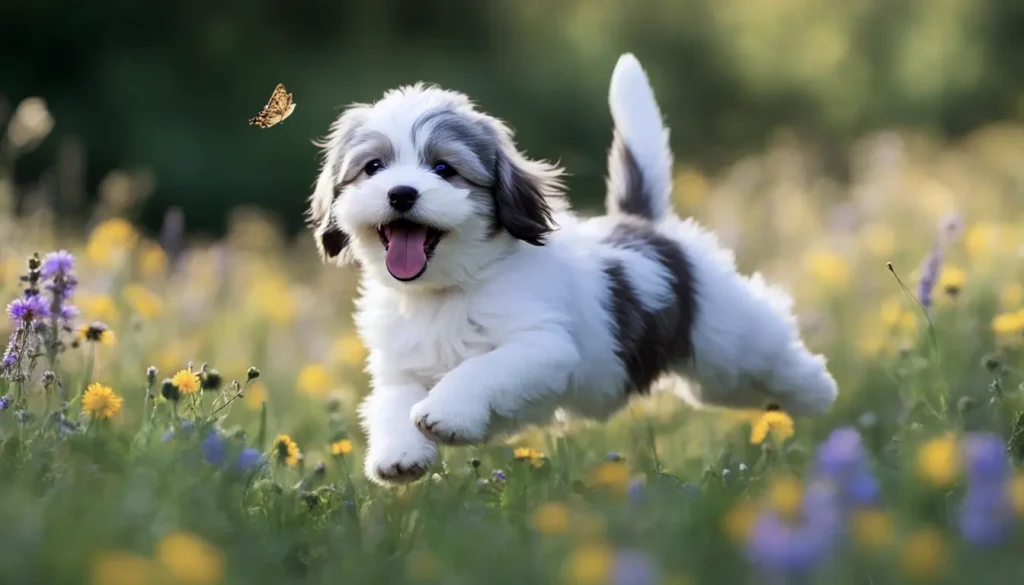
Brain-Boosting Puzzle Toys: Pups need physical and mental exercise to stay engaged and out of trouble! When Rufus acts bored with nothing to do but nips ankles and shoes, I whip out puzzle toys stuffed with kibble to get the gears going.
His favorite is a plastic bottle filled with tasty morsels only accessible once nudged with his nose or batted with his paws. You can also DIY puzzle toys, like snipping holes in a cardboard box for kibble to fall out when tipped. Brain games prevent destructive chewing by fulfilling pups’ innate need to sniff, forage, and problem-solve.
Designated Potty Station: I set up an old turf mat outside his go-to grass patch to properly train Rufus. The tactile, smell, and location cues clicked instantly, speeding up the training process by offering him consistent bathroom steps from the door anytime nature called.
Easy access prevented accidents between leashed walks, and positive reinforcement upon pottying outside motivated repeat performances fast—place pee pads by the mat, especially for young pups still working on complete bladder control.
3. Start Small on the Training Trail
With an excitable explorer like Rufus, I had to learn restraint when introducing training concepts to avoid sensory overload on our puppy. Here are some essential tips that made all the difference in his comprehension:
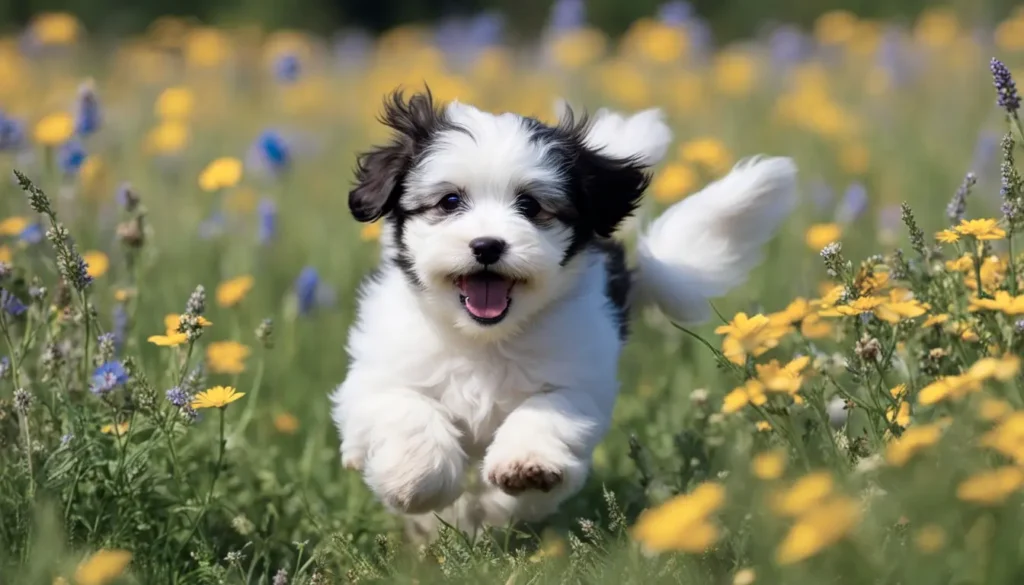
Break Down Commands: During initial training, only work on one new verbal cue per session, ideally in 5-minute bursts. Anything longer overwhelms a puppy’s short attention span. Choose single-action commands like “Sit!”, “Stay!” and “Come!” for clarity.
Train in Distraction-Free Zones: First, practice commands exclusively in quiet rooms without toys, food, or other pets to contend with. Once Rufus consistently responded correctly over multiple tries over a week, I slowly added minor distractions like a ball in the corner to strengthen the behavior.
Use High-Value Treats: Break out the good stuff in the earliest training stages! Bite-sized, stinky, and soft treats, your pup goes bonkers for turbocharge motivation and response times with the environment. With the gradual introduction of environmental distractions and intermittent rewards, Rufus now eagerly performs his entire repertoire of obedience tricks just for cuddles and praise.
4. Establish a Predictable Routine for Your Pup
As a fellow outdoor explorer at heart, keeping my energetic pup on a consistent daily routine helped immensely with potty training success. Here are some of our can’t-fail schedules:
Feed on Schedule: Puppies do best with 2-3 scheduled feedings spaced throughout the day. I give Rufus measured meals twice daily – once at 8 AM sharp before our morning constitutional and again at 5 PM after returning from the evening walk. This consistent timing prevented surprise accidents from research digestion issues.
Walk Regularly: I committed to a fixed walking schedule that catered to his biological needs from the first week I brought Rufus home at eight weeks old. Generally, puppies need to potty immediately upon waking up, 15-20 minutes after eating, and every 1-2 hours.
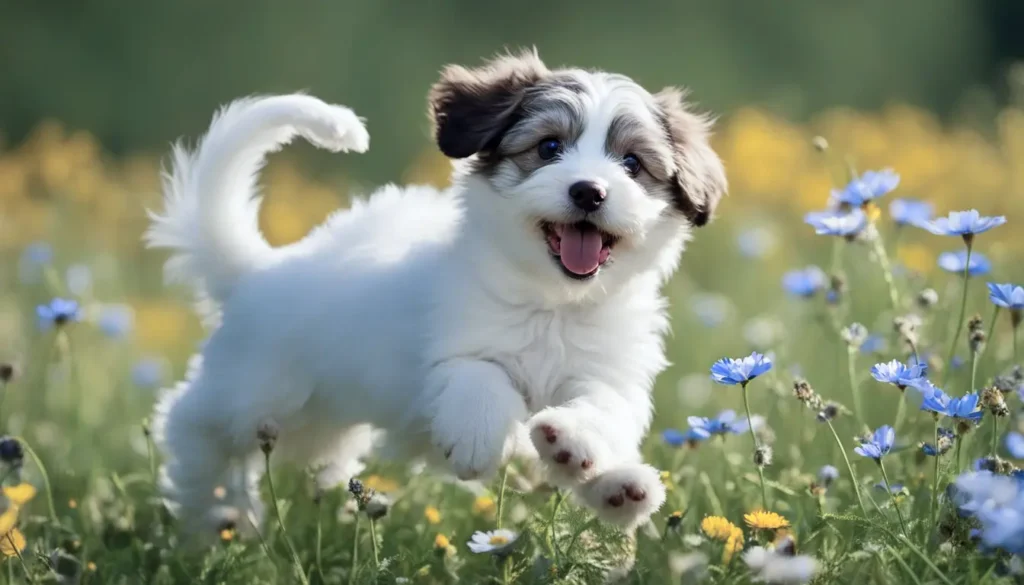
Building our days around a predictable potty walk pattern – right after breakfast, mid-morning, after lunch, mid-afternoon, and before bedtime – meant no surprises for either of us! Now, one year later, we still abide by this schedule seamlessly.
Enforce Naptimes: Puppies require much more sleep than adult dogs – we’re talking 16-20 hours daily, even for energetic breeds like Havanese! Rufus acted out with zoomies, hyperactivity, and defiant behavior without sufficient rest.
After some trial and error, I learned to enforce regular naptimes in his crate throughout the day. We stick to a schedule of 1-2 hours awake and 2-3 hours sleeping. This routine prevents chaos and overstimulation while giving me needed breaks, too!
5. Practice Patience on the Life Trail
In all sincerity, I tested my patience constantly during those first few months with Rufus, but I responded harshly, which only damaged our bond and impeded training progress. With time and conscious effort, I embraced training snafus and accidents as learning opportunities requiring compassion from us both.
Here’s my best advice for staying cool, calm, and collected even when your rambunctious Havanese pup is pushing buttons:
Reinforce Calm Behavior: Dog behavior research shows that giving attention primarily to energetic behavior inadvertently reinforces it. Whenever Rufus settled down on his own during crazy puppy antics, I made a huge fuss with praise and treats to teach him mellowness and self-soothing earned rewards over chaos.
Redirect Rather Than Reprimand: Attention – even negative attention! – rewards a puppy for unwanted behaviors. If I caught Rufus gnawing the couch or barking incessantly again, instead of yelling, I immediately redirected him to a chew toy or brain puzzle. This taught him the correct outlets for urges.
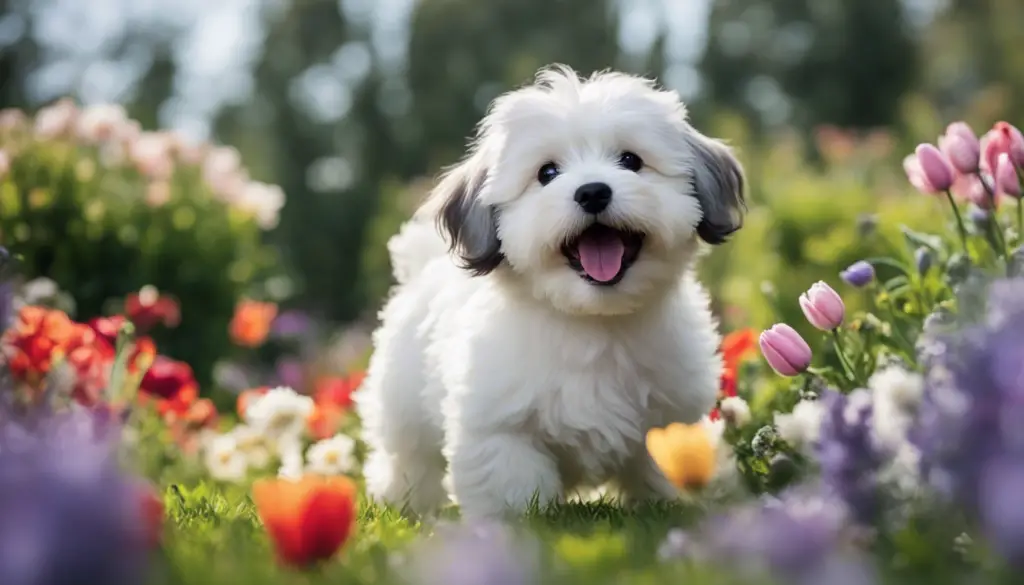
Reward Progress: While Rufus’ training journey had messy moments, focusing too much on imperfections sets you both up to fail. Instead, celebrate small wins and give mini rewards for steps in the right direction. Progress over perfection prevented me from getting discouraged while keeping Rufus confidently chugging along.
Take Deep Breaths: Finally – don’t forget about your own needs! Puppies push seasoned dog owners to the brink, too. Whenever tensions ran high, I paused to take deep breaths before responding. Regulating my emotions kept me level-headed enough to address behaviors effectively. Your reaction sets the tone, so fake it ‘till you make it with calmness!
Summary: Gear Up for the Road Ahead!
Welcoming a Havenese puppy into your life promises exciting new adventures together! However, innovative preparation goes a long way in smoothing the training journey for both humans and pups. Remember to harness positive reinforcement techniques, invest in essential gear, take small steps, establish a predictable routine, and give the process patience and love.
Stay positive and consistent, reward progress often, redirect instead of reprimand, and tap into those deep breaths when needed! With time and effort devoted to understanding your puppy’s needs and motivations, you’ll form an unbreakable bond over your shared path ahead.
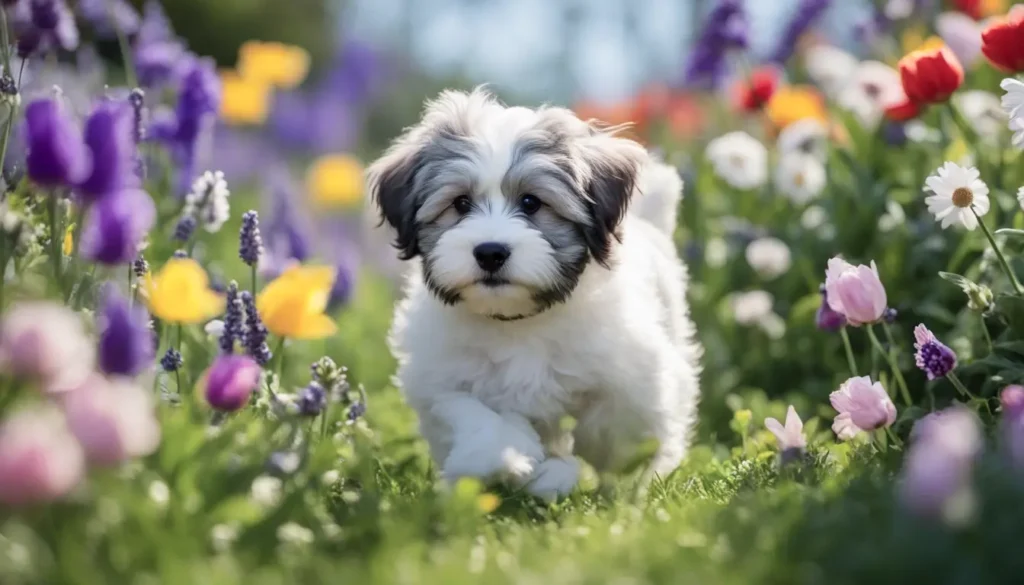
Now, it’s time for me to grab Rufus and hit our favorite forest trail as I do each evening! I can’t wait to practice newly learned tricks with his favorite turkey jerky bits tucked away in my pack, kept fresh in a handy old puzzle toy. Adventure awaits – embrace it with your Havanese co-explorer! Let the tail wags, positive vibes, and fun begin.
Frequently Asked Questions
What are the most effective positive reinforcement training methods?
The most effective positive training methods are clicker training paired with high-value food treats to reinforce desired behaviors strongly and to phase treats out over time as the behavior becomes habitual while increasing verbal praise and affection. Creating a positive association speeds up response times.
What type of harness works best for training Havanese puppies?
For Havanese puppies, choose a comfortably padded harness with adjustable straps that distribute weight across the torso instead of the delicate neck. This gives complete control while walking nicely on a leash without choking hazards. Prioritize lightweight, breathable material that won’t rub or irritate the sensitive skin.
Should I use treats continuously when training my Havanese puppy?
While treats are hugely motivating initially, you should gradually phase them out over time to avoid overdependence. Reward with treats every few times once a behavior is learned, then shift to only verbal praise and affection as the primary reward. Intermittent rewarding helps reinforce obedience even without food.
How can a routine help make Havanese puppy training more successful?
Establishing a consistent, predictable routine aids house training by planning out opportunities for outdoor potty breaks around critical times like waking up and eating. Scheduled feeds, walks, and naptimes also prevent accidents and behavioral issues by regulating a puppy’s energy levels, digestion, and bathroom needs.
Why should I avoid punishments and stay patient with my Havanese puppy?
Puppies have limited bladder control, attention spans, and life experience, so progress requires patience and compassion. Harsh reprimands can instill fear and anxiety and damage your bond. Staying calm and using redirection, patience, and positivity sets you both up for training and life success through positive reinforcement.
